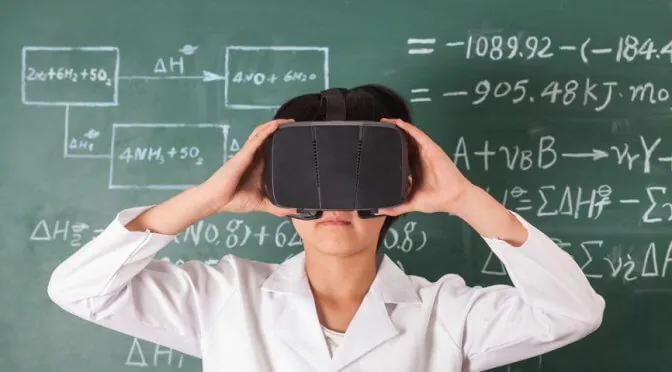Virtual reality used in education is becoming increasingly popular and this trend will continue as market growth is expected to witness a significant boom over the next five years. Many industry experts believe that the introduction of virtual reality (VR) technology for educational purposes is offering the best solution to improve the way of conventional academic teaching and learning. VR has transformed school teachings by significantly increasing the engagement and knowledge retention for students of all ages. Despite VRs success in penetrating the industry, VR in education has only scratched the surface as more advanced headsets and software with better interfaces are continuously being launched to cater different educational requirements. Not only are the quality of the products improving, but VR is becoming more cost effective with each passing year. This factor will also help virtual reality in the education sector be adopted at a higher rate than ever before.
Global VR in Education Market Overview
According to the recent market research report from Technavio, the global virtual reality in education market size is projected to grow USD 2.6 billion from 2018 to 2022, accelerating at a very strong CAGR of over 59% during the forecast period. Earlier, the adoption of virtual reality hardware products was very low because they were extremely expensive to purchase. However, the affordability of VR gear has increased recently due to the developments in technology and the economies of scale possessed by major companies. Therefore, the increased affordability of VR gear and VR systems will act as one of the primary growth drivers for the global virtual reality market in the education sector through 2022.
Currently, North America is leading the global VR in the education market in terms of regional market share and is expected to continue to dominate the market over the next few years. The increased awareness among individuals regarding the advantages of integrating VR software in schools and colleges in the US and the focus of the US government to improve the quality of education will drive the growth of the VR in education sector market size in this region.
Benefits of Adopting VR in Education
One of the main characteristics of adopting VR in education is to make the studying process exciting and more effective. VR simulations provide a deep understanding of the educational material by a learner with its further application in real life. VR plays a significant role in meeting the student’s learning requirements and offers a platform for students to learn effectively through an immersive visualization in the VR headset. Therefore, the benefit of an improved student experience in the learning process is one of the primary market growth drivers for virtual reality in education.
Moreover, an immersive learning experience to students based on their level of understanding of the subject can be created for students by the faculties with a virtual content. Therefore, for the effective use of VR headsets and VR content, students can learn and understand the knowledge better. In turn, it is also easier for teachers to teach students through a specific structure during their formative years.
The Future of the Virtual Reality in Education
When it comes to market prospects, the adoption of VR in education is expected to witness a significant increase by 2022. This is partly due to the rise in demand for experiential learning around the world. By taking the learning process beyond the classrooms, VR enabled educational resources can effectively facilitate the growing trend towards independent learning routes. For instance, the medical realities platform employs the VR technology to help the medical students watch live broadcasts of simulated surgeries, giving them real-world experiences – something they wouldn’t normally get until late in their training.
The VR learning process has already successfully adopted in the early education facilities, such as pre-school or elementary school, to make the learning process more fun and exciting through forms of interactive videos, audios, or games. The future of VR applications is expected to have a faster growth rate in higher education facilities, especially for the subjects including science, engineering, mathematics, design, and architecture. For example, a world’s leading VR content company Unimersive, has launched several sets of VR content for teaching anatomy, ancient architecture, and corporate training.
For More Market Insight of this Topic, Check Technavio’s Global Virtual Reality Market in Education Sector Report 2018-2022
This market research report provides the latest market size and market development for major market segments in terms of product types and regional market landscape. The report contains detailed market trends, market drivers, market challenges and key opportunities. In-depth market analysis such as Porter’s five force model, and comprehensive competitive landscape including detailed profiles of top companies are also included in the report.



